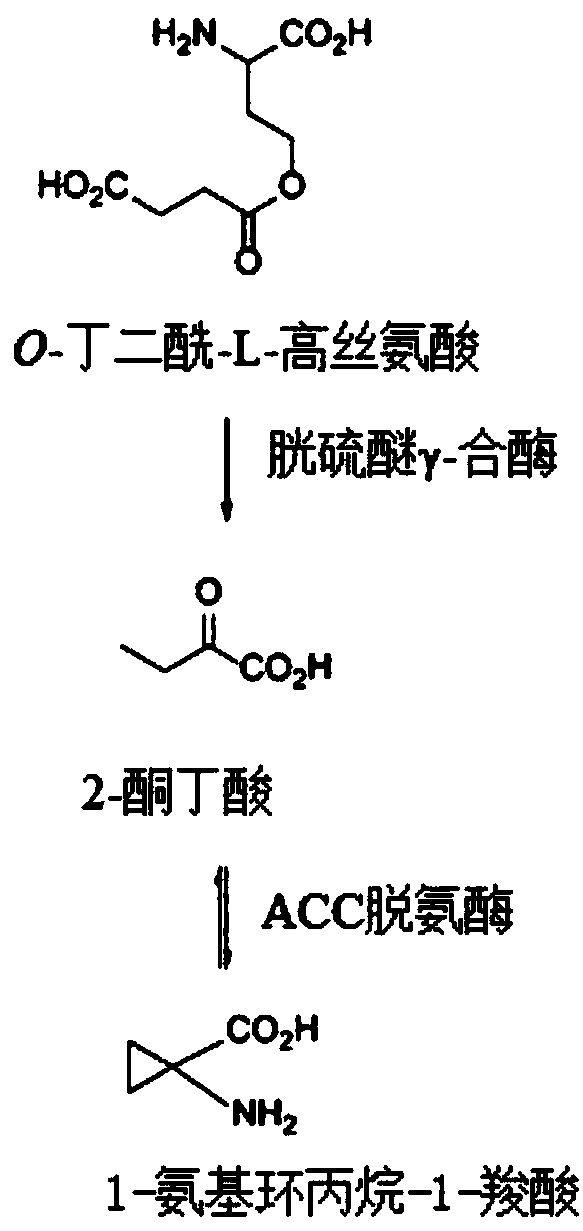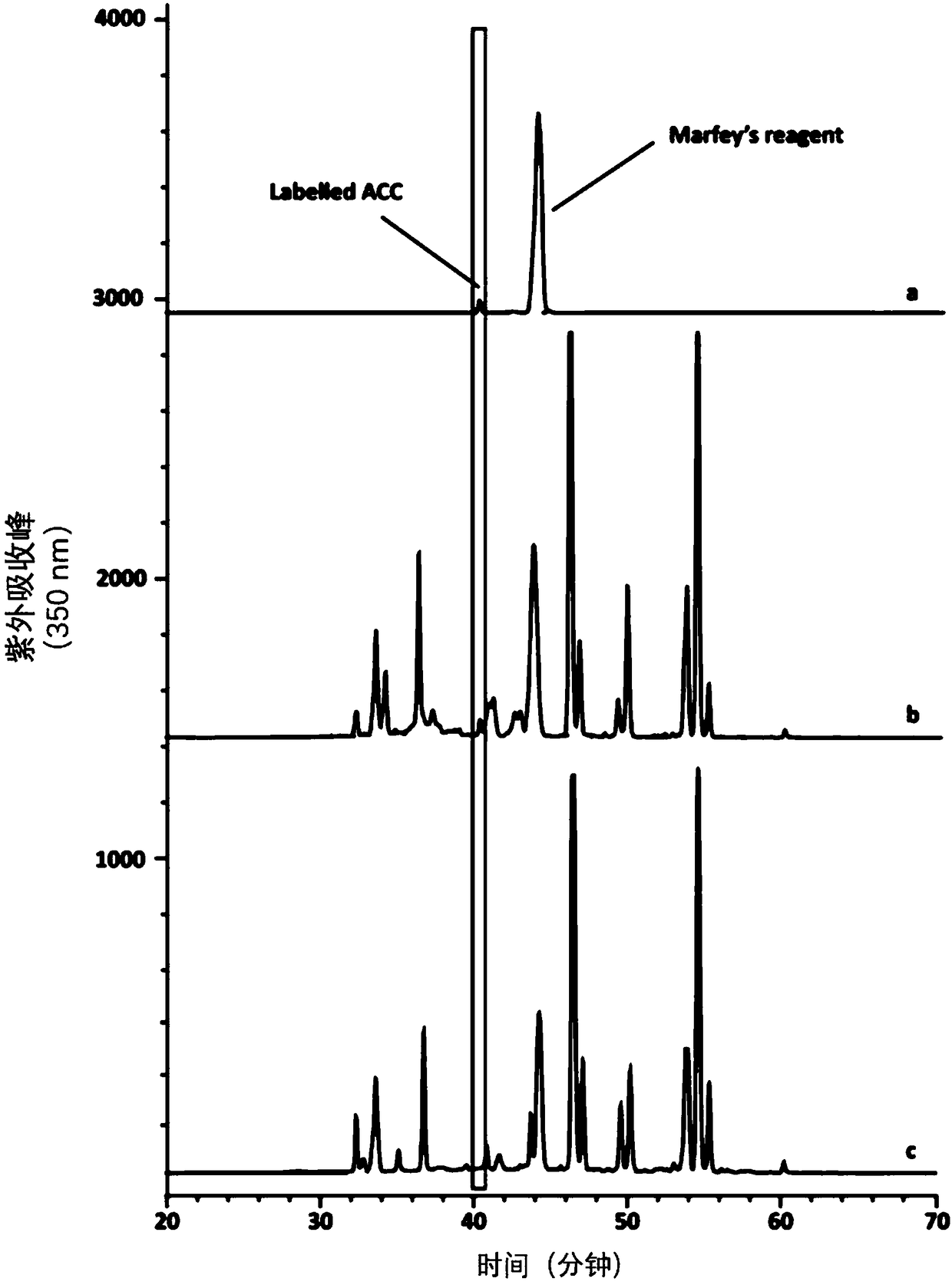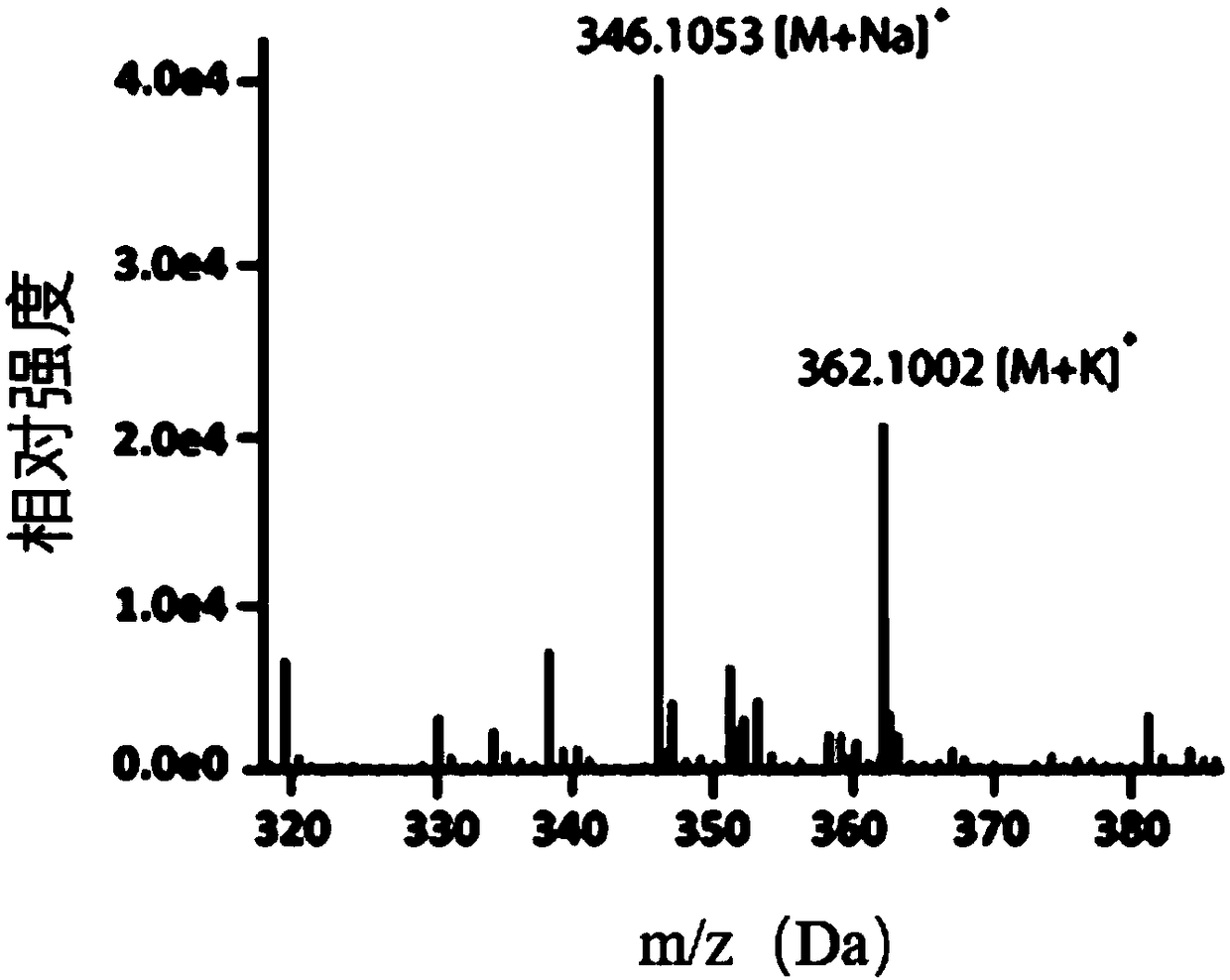Colloidal lysobacter OH17 and application thereof in plant growth
A colloidal lysobacterium, plant growth technology, applied in the direction of plant growth regulators, plant growth regulators, applications, etc., can solve problems such as unspecified metabolic pathways, and achieve the goal of improving stress resistance, reducing massive accumulation, and improving growth Effect
- Summary
- Abstract
- Description
- Claims
- Application Information
AI Technical Summary
Problems solved by technology
Method used
Image
Examples
Embodiment 1
[0035] Concentrate 10L of Lyobacter colloidis OH17 fermentation supernatant to 300mL by vacuum distillation, mark ACC according to the reaction system in Table 1, place it at 37°C and 180rpm for 2 hours, and use high-performance liquid chromatography to analyze the supernatant after reaction. For detection, the detection instrument used is Shimadzu MS-2020, the chromatographic column is C-18column, the detection wavelength is 350nm, the detection temperature is 35°C, acetonitrile is used as the mobile phase, and the mobile phase detection conditions are shown in Table 2. The reference substance is the ACC standard labeled with Marfey's reagent.
[0036] Table 1 Marfey's reagent labeled ACC reaction system
[0037] Reagent
Volume / μL
Supernatant
100
40
Marfey's reagent
100
[0038] Table 2 Conditions for high performance liquid chromatography work
[0039] time
Embodiment 2
[0043] 30mL OD 600 Lyobacter colloidis OH17 fermentation broth of ≈2 was ultrasonically crushed (Ultrasonic Homogenizer, Scientz-IID) for 20 minutes, centrifuged at 6000rpm for 5 minutes, the supernatant of the cell disruption liquid was absorbed and concentrated to 5 mL by vacuum distillation, and the concentrated cell disruption liquid was taken The supernatant was labeled with 2-ketobutyric acid according to the reaction system in Table 3, and reacted at 80° C. for 1 hour. Use high performance liquid chromatography to detect the supernatant after the reaction. The detection instrument is Shimadzu MS-2020, the chromatographic column is C-18column, the detection wavelength is 450nm, and acetonitrile is used as the mobile phase. The mobile phase detection conditions are shown in Table 4 below.
[0044] Table 3 labeled 2-ketobutyric acid reaction system
[0045] Reagent
[0046] Table 4 Conditions for high performance liquid chromatography work
[0047] tim...
Embodiment 3
[0050] The amino acid sequences of EC 3.5.99.7 (Pseudomonas entomophila) and EC 2.5.1.48 (Cicerarietinum) were respectively compared with BioEdit (Version 7.0.9.0) to find the corresponding functional genes in Lysobacter colloidus OH17 strain.
[0051] Compare the result as Figure 5 with Figure 7 shown, where Figure 5 For Peg_1256 and from Phytophthora sojae (UniProt: G5AFQ7), Azospirillum lipoferum (UniProt: Q1G755), Bradyrhizobiumdiazoefficiens (UniProt: Q89XR6) and Pseudomonas entomophila (UniProt: C3VP48) in the ACC deaminase amino acid sequence homology comparison, 1256peg_ It has 62% amino acid homology. Figure 7 Homology alignment of Peg_5321 with cystathionine γ-synthase amino acid sequences from Cicer arietinum (UniProt: L0EK12), Mycobacterium ulcerans (UniProt: AOPKT3) and Helicobacter pylori (UniProt: Q1M0P5), peg_5321 has 59% amino acids homology.
[0052] Further protein domain analysis of the found genes revealed that Peg_1256 has a protein domain charact...
PUM
| Property | Measurement | Unit |
|---|---|---|
| length | aaaaa | aaaaa |
| length | aaaaa | aaaaa |
| length | aaaaa | aaaaa |
Abstract
Description
Claims
Application Information
 Login to View More
Login to View More - R&D
- Intellectual Property
- Life Sciences
- Materials
- Tech Scout
- Unparalleled Data Quality
- Higher Quality Content
- 60% Fewer Hallucinations
Browse by: Latest US Patents, China's latest patents, Technical Efficacy Thesaurus, Application Domain, Technology Topic, Popular Technical Reports.
© 2025 PatSnap. All rights reserved.Legal|Privacy policy|Modern Slavery Act Transparency Statement|Sitemap|About US| Contact US: help@patsnap.com



